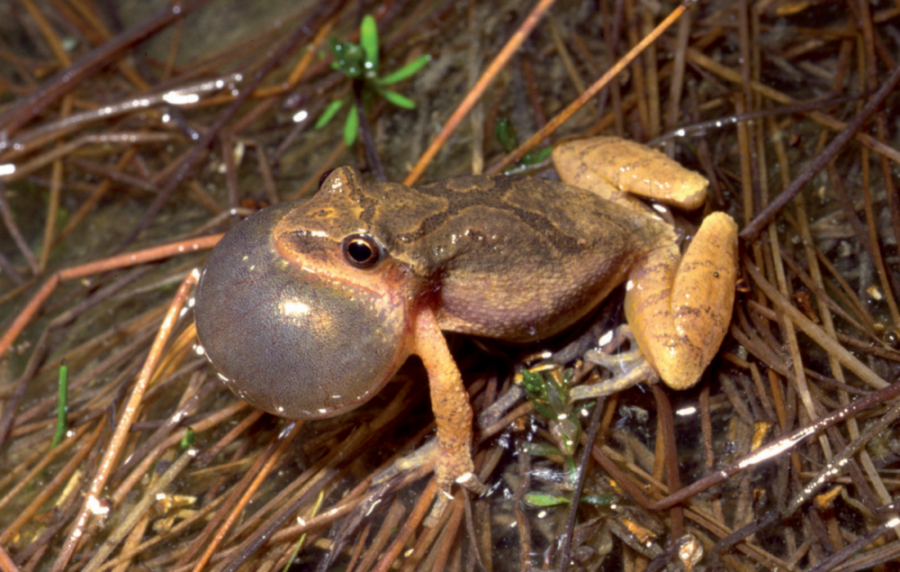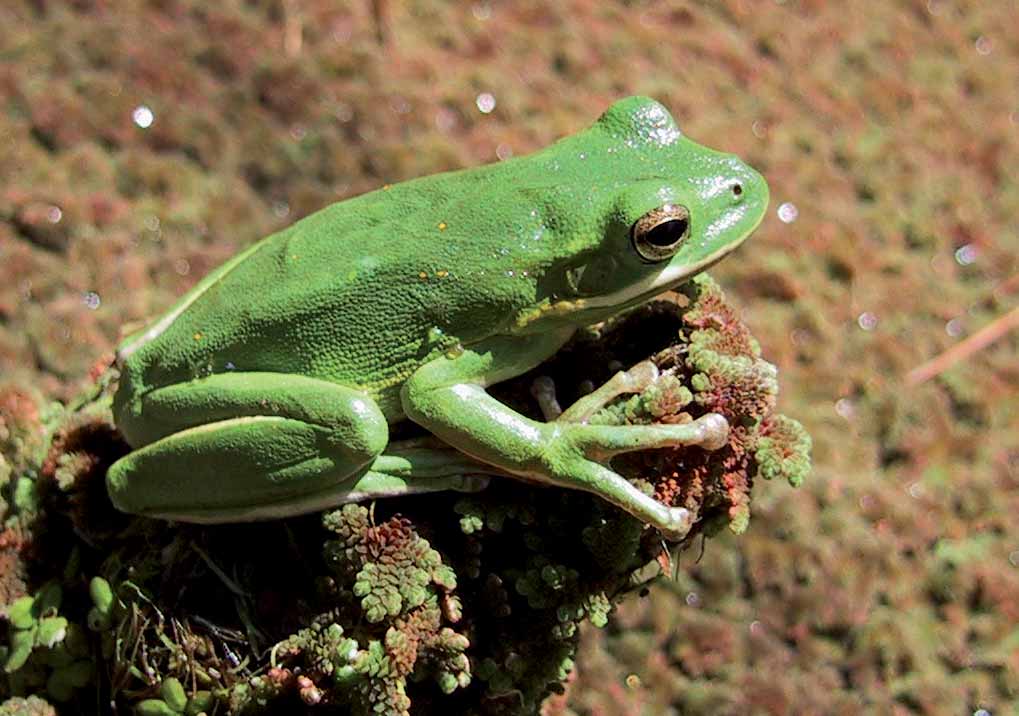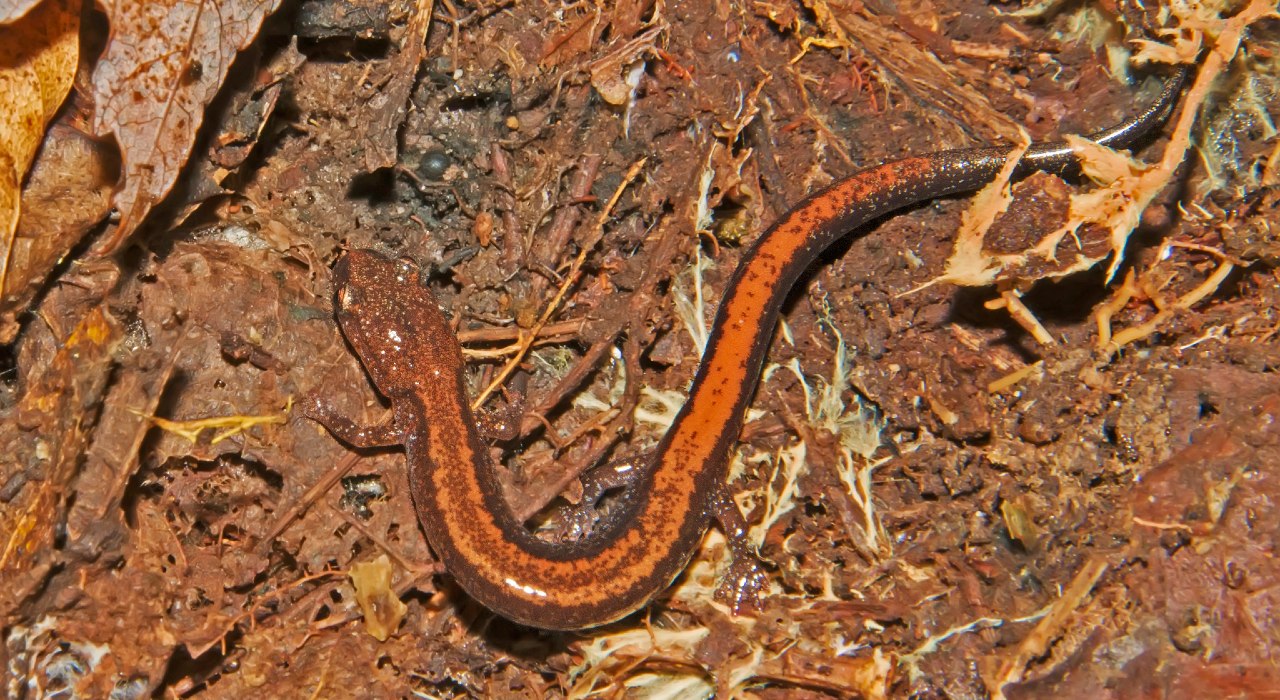By Stephen Living/DWR
The sure signs of approaching spring are everywhere. Early wildflowers are blooming, tender green leaves are uncurling from the buds and tundra swans and Canada geese can be heard overhead as they wing their way north. Another sure sign of spring across Virginia is the emergence of amphibians!
In some parts of Virginia, amphibians may be active through much of the year as weather allows, but once things start to warm up frogs, toads and salamanders across the state get active. Virginia is home to 87 species of amphibian, 32 of which are considered Species of Greatest Conservation Need in Virginia’s Wildlife Action Plan. There are number of species that are relatively common that you can enjoy seeing and hearing near your home.

A spring peeper. Photo by Steve Roble
Loud choruses of spring peepers are ringing out from small ponds, wooded swamps, ditches, and grassy swales across Virginia. These are one of the first amphibians to emerge from hibernation and a classic sign of spring. These tiny frogs are more often heard than seen. Careful scanning along the vegetation on the edges of wetland might reveal a ¾- to 1 ¼-inch long, light brown frog with a darker cross-shaped mark on its back. This marking gives the animal its scientific name, Pseudacris crucifer.
Virginia has six species of tree frogs. The green tree frog (Hyla cinerea) is found throughout eastern Virginia and can often be heard and seen on rainy nights. They are sometimes attracted to lights, where they hunt for insects, and its not uncommon to see them on windows or glass doors. While generally bright green above, these frogs can change color depending on their environment and can appear light brown or darker green. We also have two species of gray tree frogs: gray tree frogs (Hyla versicolor) and Cope’s gray tree frogs (Hyla chrysoscelis). Don’t be fooled by names, as all three of these masters of disguise can change their color change and often appear green! These species appear nearly identical and can only be told apart by their calls. On rainy nights their trills can echo across the landscape. Like their green cousins, they’ll also hang out by lights to feed on insects.

A green tree frog. Photo by Christopher Hobson

A gray tree frog. Photo by Steven Johnson
Want to know more about Virginia’s frogs? Check out A Guide to Virginia’s Frogs and Toads online or buy a copy!
From noisy frogs that hang out on your front door to a silent salamander that hides under leaves and logs—the red-backed salamander (Plethodon cinereus) is the most common salamander in Virginia and found throughout the state. Despite the name, they occur in a variety of patterns—from an all-gray “lead-backed” variety through shades of yellow and orange in addition to the typical red-backed form.

An eastern red-backed salamander. Photo by Christopher Hobson
These salamanders belong to a group called the lungless salamanders. They obtain oxygen directly across their skin, and so must stay moist. They spend their time under leaf litter or logs feeding on bugs (invertebrates if we’re being scientific). Unlike most amphibians, their young don’t develop in the water. Instead, they hatch from clusters of eggs as fully formed tiny adults—a process called direct development.
We have A Guide to the Salamanders of Virginia as well!
What can you do for amphibians? Protect water and wetlands—clean water IS habitat! Minimize pesticides and fertilizers and allow natural, vegetated buffers to surround water bodies. To provide habitat for red-backed salamanders and other wildlife, maintain leaf litter along with large rocks or even logs for them to hide under.
Want to go all out for frogs? You can create a frog pond for your habitat. This not only provides a place for frogs and toads to breed, but it will also support many other species of wildlife.
Stephen Living, the DWR habitat education coordinator, is a biologist and naturalist with a lifelong love of wildlife and nature that began in the woods and streams of his childhood.


